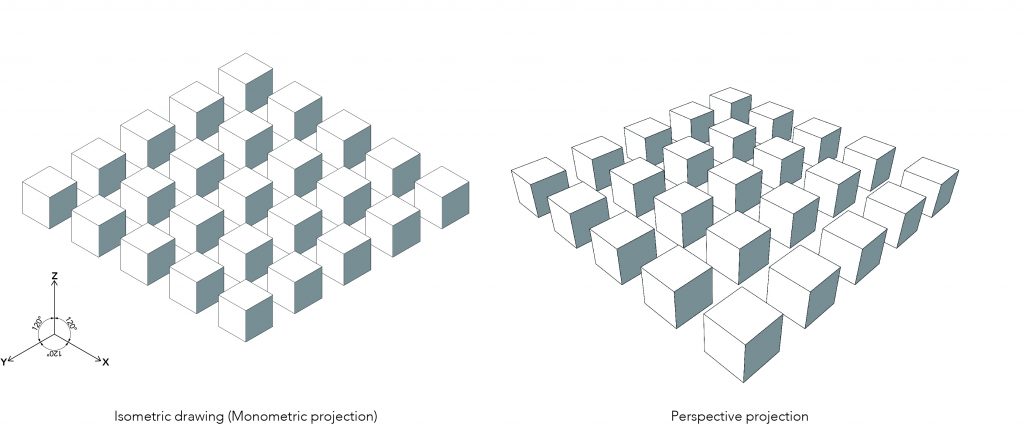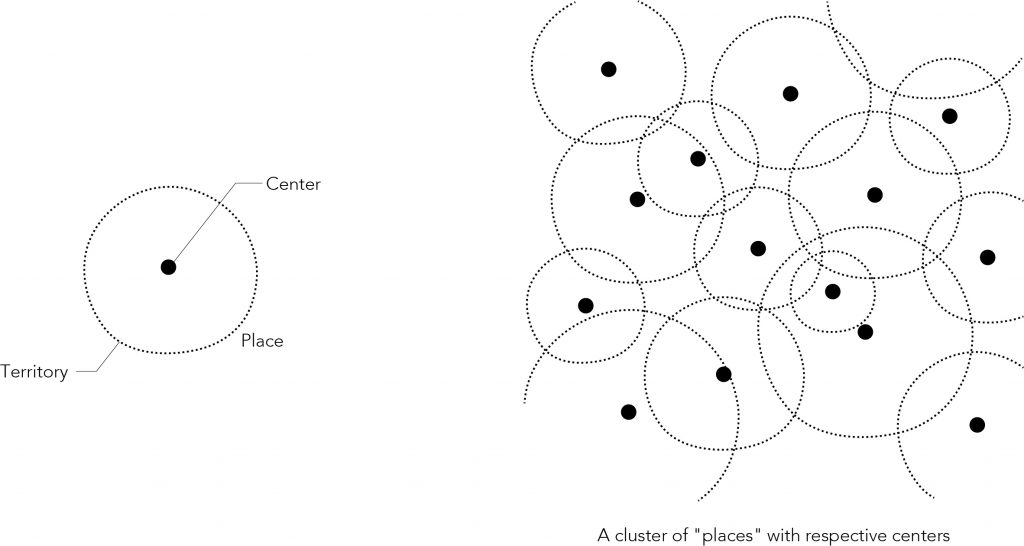Isometric-based Design Thinking
Isometric drawing, also known as a “monometric projection method” is a presentation method of drawing a space or object as if looking down diagonally from above, based on the three orthogonal coordinate axes X, Y, and Z. In contrast, a “perspective projection method” produces a drawing where a space or object drawn from a fixed viewpoint converges to vanishing points. Characteristically, the perspective projection method generates a spatial hierarchy of “front” and “back” of drawn objects when it is seen from any selected point. On the other hand, there is no spatial hierarchy between different parts in isometric drawings, because they are three-dimensional drawings without fixed viewpoints. Moreover, the space can be extended infinitely because there is no vanishing point. Isometric drawings therefore involve highly abstract spatial concepts.



